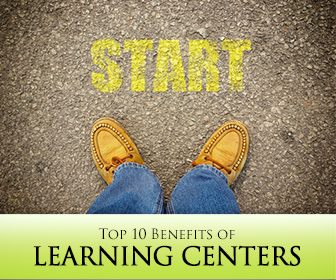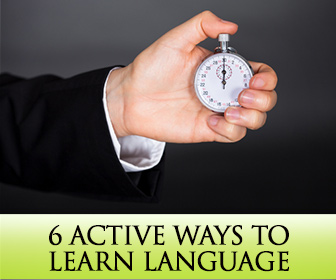Top 10 Benefits of Learning Centers in ESL Classrooms


Maybe that’s why I dread sitting through a lecture. Of course, my stir crazy seat could also be an issue of learning style. Or maybe I just have adult onset attention deficit disorder. (Is there such a thing?) All kidding aside, the truth remains that moving coupled with language instruction yields better results. It’s really not that hard to get your students moving while they learn once you decide to do it, and there are lots of way to effectively incorporate movement into language learning. Here are some ideas you should consider using in your classroom if you are trying to get your ESL students up out of their seats.

I love games! Whether it involves cards, dice, game pieces, or anything else, I love bringing games into my ESL classroom. Of course, when my students are playing them I want the games to have a purpose. I don’t just bring in twister and expect my students to be fluent by the end of the day. So I take games that I know are great language builders and tailor them to the day’s specific goals. These are some of my favorites. Charades is a go to game for vocabulary building. Party guests is great for getting students to talk as they mingle. Relay races can be tweaked for answering target questions. All of these and many more are ways to get your students moving and having fun while they learn English. It just takes a little thinking and adjusting to make sure they help meet your language learning goals for the day.
Total physical response is a technique I first heard about while taking graduate classes. I attended an American university and was studying applied linguistics. Imagine the surprise I and the rest of my class had when our American teacher walked in and started teaching us in a language most of us couldn’t even identify. We later found out that she was speaking Hebrew. I haven’t had any instruction in the language since that ten minute lesson over a decade ago, but I still remember what she taught us. If you haven’t heard of TPR, the basic concept is that students combine language instruction with physical actions as they learn. It’s fantastic for beginners, but even intermediate and advanced students benefit from this movement-language coupling. If you want to know more about TPR, take a look at Beginning at the Beginning: What you need to know if you teach absolute beginners. If you try it in your classroom, you are sure to see results.
One of the highlights of my elementary school career was the yearly fieldtrips we took each spring. No matter where we went, it was always one of the most memorable events in the school year. You can give your ESL students the same type of memorable moments by getting them out of the classroom and into a real life English-using setting. If you teach in an English speaking country, the good news is almost any place can give a valuable experience to your students, and it doesn’t have to cost anything. I have taken students for college tours, to visit a local court house (and see court proceedings), to order coffee at a restaurant a short walk from campus…almost anything will fit the bill. As long as your students can hear English, use English or see English being used, they will benefit from the time out of the classroom. If you teach English overseas, the opportunities for English speaking destinations may be more limited, but they are still available. Try an American restaurant, or connect with a group of expatriates in the area and see where they work and live. They may be willing to invite you and your class into a part of their lives where they speak English.
Maybe the elementary school teachers have it figured out. After all, they are the ones who most often incorporate learning centers into their classroom. The good news is older students can benefit from those centers, too. If you don’t already know, learning centers are simply independent study areas around the room where students can choose an activity during free learning periods. Some learning centers may be elaborate, but they don’t have to be. Sometimes the best learning centers simply make available activities you did with your class for students who want to do them again. Learning centers get students moving around the room, but the activities in the centers can also be motion oriented. For example, you might have a large person shaped cut out of felt and have students place labels on the body parts. You could have students drive a matchbox car through a simple map while following directions and have them answer where they ended up. The possibilities are endless. If you have never included learning centers in your classroom, keep your eyes open for upcoming articles on why you should and some ESL learning centers that are easy to set up in your classroom.
Ah, the sweet sounds of music flowing through your classroom…it does more than set the mood for a test or activity. Music is invaluable for ESL teachers and students. Music challenges students’ listening skills and gives them several possibilities for moving while they learn. Dancing to vocabulary or theme specific songs is great for shaking out the wiggles in younger ESL students, but music can offer more. Adding hand motions to simple songs your students sing will cement vocabulary words and their meanings into your students’ heads. For example, “Head, Shoulders, Knees and Toes” is a classic for teaching body parts. You can find more songs with hand motions than you would ever need with a google search or a search on YouTube. Try it, and get ready to boogie down.
Never underestimate how effective simply taking your class outside can be. Younger students (and some older ones as well) enjoy games that get them moving on the playground. Older class members may just want to sit on the grass and feel the breeze on their faces. Either way, these classes will be memorable and will mean more to your students than you might realize.